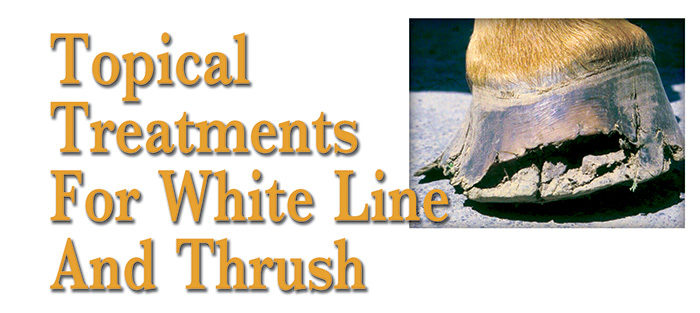American Farriers Journal
American Farriers Journal is the “hands-on” magazine for professional farriers, equine veterinarians and horse care product and service buyers.

FUNGI AT WORK. Fungi and bacteria can take advantage of lesions in a hoof wall and contribute to extensive hoof damage.
White line disease and thrush are probably the most common hoof problems that have farriers and horse owners turning to topical treatments. There are many commercial remedies that lay claim to be able to clear up these problems and many farriers and horse owners have a favorite that they swear by. The real question is what’s in these products that’s making the difference?
But, before looking into what works best for treatment, here is a brief review of the two maladies.
White line disease is also known as onychomycosis, stall rot, hollow foot, wall thrush, yeast infection, and seedy toe, white line disease is actually an infection, as defined by Tabor’s Medical Dictionary.
The name is misleading on another front as well. The white line comes into play only in advanced cases. Usually, it is a hoof wall condition involving fungi and/or bacteria that break down the protein and collagen in the region between the sensitive and insensitive laminae.
Opportunistic in nature, these organisms rarely inhabit a healthy hoof wall, but rather take advantage of a stressed, bruised or traumatized hoof. When coupled with poor circulation, wet or unhealthy conditions and improper hoof balance or maintenance, infection is likely to develop.
Symptoms are often unclear and may be different in each horse, but if you see one or more of the following, chances are white…